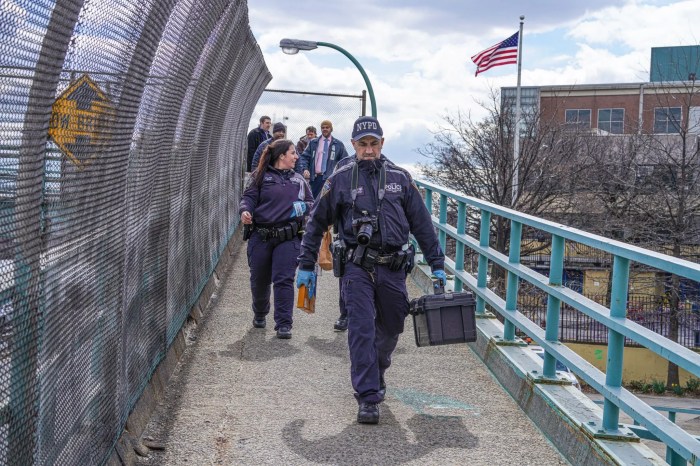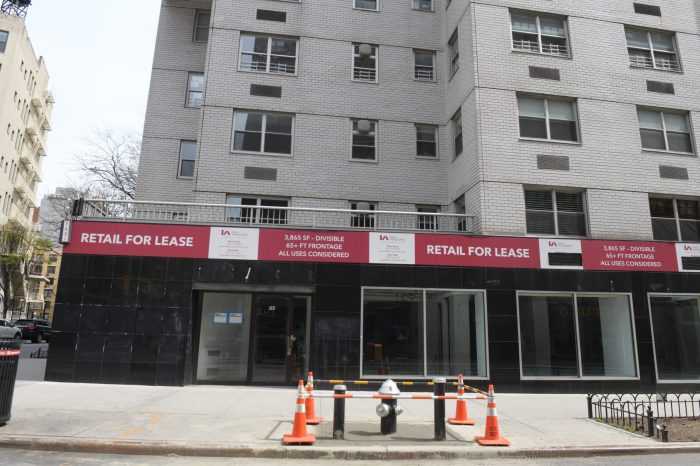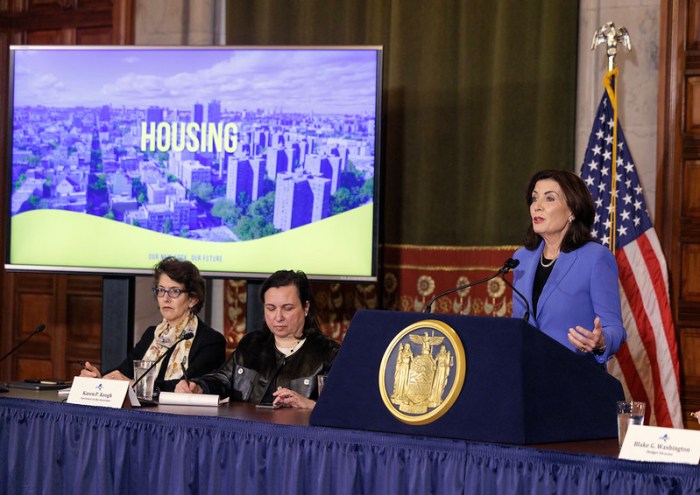
The Battle of Brooklyn circa 2017 is in Brownsville.
It has arrived in the form of a showdown between a faith-based group determined to level a 109-year-old church to erect affordable housing and residents who want to preserve their neighborhood’s patrimony while providing a hub for Brownsville culture.
Brooklyn Supreme Court Judge Bernard Graham issued a temporary stop to the demolition of the magnificent, albeit deteriorating, Our Lady of Loreto Roman Catholic church on April 26.
A final decision on the historic architectural gem is expected to be handed down on May 9.
Catholic Charities Progress of Peoples Development Corporation (CCPOP), which leases the site from the Diocese of Brooklyn, wants to demolish the 1908 Italian Renaissance church at Sackman and Pacific streets to erect an unknown number of “energy-efficient units for low-income families” in a city where almost 60,000 people are homeless.
Members of the Brownsville Cultural Coalition and others long to landmark the church, which was closed to parishioners around 2008, and repurpose the shrine built by an all-Italian team of craftsmen into a cultural center for residents woefully short in community spaces for the arts.
Housing is important, said Miriam Robertson, executive director of the Brownsville Cultural Coalition, but Brownsville also needs to honor and preserve an important and elegant monument to its immigrant roots and history.
Her neighborhood also desperately needs a cultural hub for artistic uplift and enlightenment, she said. There are five shelters — two for men and three for women and children — “within a two-block radius of the church,” yet few places for shelter residents or other Brownsville locals to hear music or experience dance and theater, Robertson said.
Brownsville is “the NYCHA capitol of NYC,” and has more than 20 homeless shelters overall, added Les Ford, the president of Nia Theatrical Production Co. and a member of the coalition, referring to the city’s Housing Authority. “We want the church landmarked and remodeled into a cultural center for Brownsville” to help the area develop economically and create positive opportunities for people already there, he said.
“What happens to the kid who wants to be a sculptor or an artist? Brownsville needs more activities for the soul!” said Ford, who started a Change.org petition to save the building that attracted 1,136 signatures as of Tuesday.
More than 5,000 applications were received for the 64 low-income apartments already built on the site of Loreto’s former rectory, nunnery and school, proving the need for more homes, according to CCPOP.
Saving the church would cost a “prohibitive” $9 million to stabilize and repair, according to engineers that CCPOP hired last year, the organization said in a statement. CCPOP added it issued a formal request for proposal in 2013, but “received no completed proposals.”
“With no viable plans or financial support for preservation, the decaying building, which now poses a danger to the community, must be taken down,” the organization said.
Coalition members counter they have repeatedly sought to meet with Catholic Charities, but have been rebuffed. “It’s demolition by neglect,” said Ford, who blames Catholic Charities for failing to secure and preserve the church.
The pro se lawsuit that resulted in the current stay of demolition charges that multiple defendants failed to abide by a 2010 “letter of resolution” concerning the property. The letter of resolution stipulates “the Church itself shall not be demolished, reconstructed or damaged,” and was signed by the then CCPOP CEO and other parties. The church, said the resolution, “is not on the portion of the site of the modified project” slated for homes.
Yet the Department of Buildings issued a “full demolition” permit to Titan Industrial Service Corp. on March 24 this year. After the Brooklyn Supreme Court decision, the DOB issued a stop work order on April 28, which will likely remain in effect until a final court decision.
Marialena Giampino, a coalition member, said many Italian Americans feel betrayed by plans to destroy a house of worship that their forebears built with bare hands and hard-earned money, often donating their labor, and which they intended as a monument for the ages.
“It’s not right,” Giampino said. “Italian Americans saved their money to build this church” and in 1958 “sold the church to the [Brooklyn] Diocese for one dollar,” never imagining that the monument they made to their faith would be destroyed, she said.
The NYC Landmarks Preservation Commission, said a commission spokeswoman, “has carefully reviewed this building several times over the past few years and each time determined not to advance it for further consideration due to a lack of support from critical community stakeholders, including the Council member,” for the district, Rafael Espinal.
“My fear is that if we landmark the property, it will continue to sit vacant because the Catholic Diocese has no interest in spending capital on the site,” Espinal said. “If there was a viable plan to turn the current structure into a community center, I would have been 100 percent on board.”

















